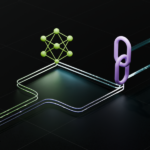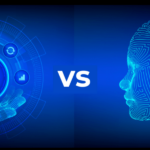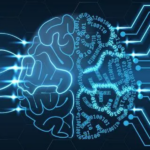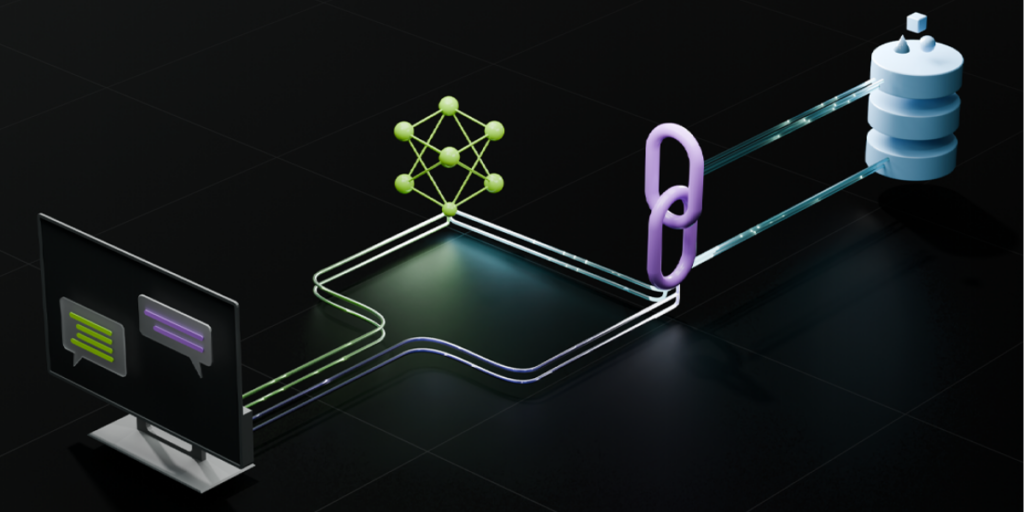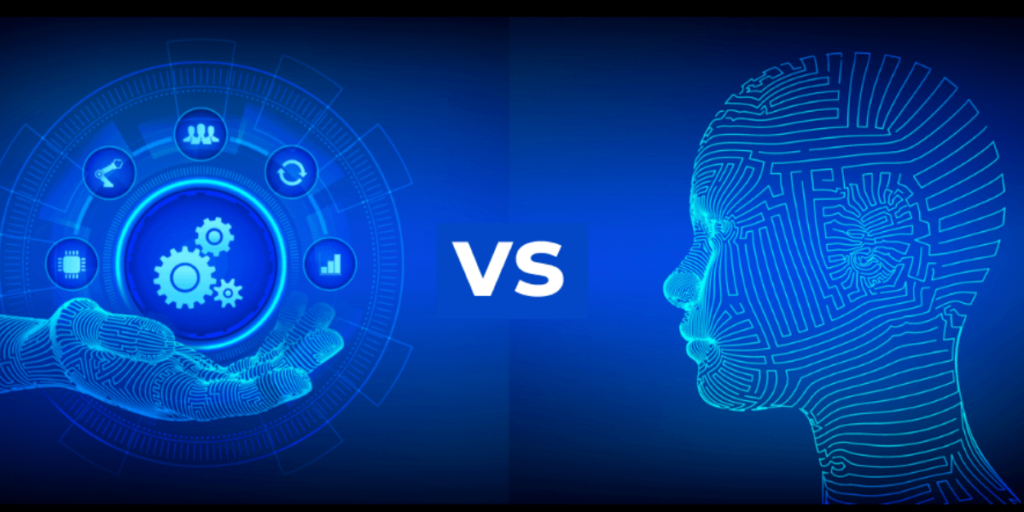Employees are the backbone of any business, so HR departments play a significant role in managing them. The AI in HR department is crucial in directing the process, whether recruiting and performance analysis, change management, or workforce planning.
According to Gartner, the survey found that 76% of HR managers think that their company could be lagging in organizational success compared with those that are implementing AI solutions for SaaS HR software development, like generative AI if it does not implement it within the next 12 – 24 months.
Over the last several years, HR departments have had to find and keep top talent, ensure compliance with the law, and evaluate HR efficiency.
The advent of AI in HR software has completely changed how HR departments work. AI is now being utilized to automate various repetitive and time-consuming jobs that HR professionals traditionally have to perform, including conducting interviews, screening resumes, and appointing new employees.
AI for HR empowers professionals to focus on more strategic tasks, such as talent management strategies, employee engagement, and fostering diversity and inclusion in the workplace. This shift in focus allows HR professionals to feel more in control and confident in their roles.
As more organizations embrace AI to enhance their operations, the HR field is evolving into a tech-driven, dynamic hub that unleashes the full potential of human talent and drives organizational success. This revolution in HR processes should inspire HR professionals about the future.
Let’s look into what’s in store for AI in HR software to find a distinctive application method.
What is AI in HR Software?
Artificial Intelligence (AI) is the term used to describe equipment and software that can complete tasks that generally require humans’ intelligence and analysis. AI mimics human thought since it can summarize information from various sources, suggest the most efficient practices, process enormous amounts of data, and tackle a variety of other scenarios in which analysis is required.
For instance, out of the more than 50 resumes you received in response to the latest job advertisement, it is possible to use AI to help you identify the best candidates who match the job description and the hiring criteria. By analyzing data, identifying patterns, and making predictions on a large scale, AI enhances human productivity. Here are some of the key phrases associated with AI:
Machine Learning (ML)
A sub-field of AI that focuses on how software programs make sense of data. ML models produce increasingly more assertive predictions through repetition and training. The models are constructed by training in which words or images are inserted into a software application, and the model can “learn” how things are matched.
For instance, photos of cats are loaded in addition to other pictures, and the model is taught to distinguish cat pictures from pictures of dogs, birds, or horses. Since the software can do this repeatedly, the model can understand what aspects (such as how their ears are shaped) constitute the characteristics of a cat. This is why large-language models (LLMs) can reproduce images and draft their articles.
Classical AI
This kind of AI utilizes the traditional algorithm (written instructions, such as recipes for food) that instruct the software program what to do with the data it is processing and receiving. An example of traditional AI is Netflix’s software, which makes available different programs and movies that match your preferred viewing habits.
Generative AI
Among these are the AI algorithms that are attracting the most attention from the media right now. GenAI is a set of algorithms that generate new content or data (e.g., texts, images, music) using existing data sources. They are programs like Gemini or ChatGPT. Since their models of the base are vast, they can employ probabilities to decide what items should be put together.
Based on our example from above, if you request GenAI to replicate a photograph of an animal, it will have studied such a large amount of information that it is aware of what features and parts are common that it will produce a realistic picture of a typical housecat.
Natural Language Processing (NLP)
This is a technology that assists machines in comprehending and creating human language, allowing sentiment analysis and speech recognition. In essence, these models have been fed a lot of words instead of cat pictures; however, the principles and processes are generally identical.
Hallucination
AI hallucinations happen when the dynamic AI model produces inaccurate data and presents it as factual. The hallucinations result from imperfections and biases in algorithmic training data and the algorithms. The basic idea is that the AI creates content that is not only wrong but could be dangerous. It’s like seeing figures in the clouds or images of faces on the moon. The outputs do not correspond with reality.
Factors contributing to AI hallucinations include overfitting bias in the training data and model complexity. These errors can have severe effects, from misdiagnosing medical ailments to disseminating false information.
Benefits of Using AI in HR Software
AI can bring significant benefits to HR software development, providing reassurance and confidence in the potential of AI in their field. Here are some important benefits:
Time Efficiency
Time efficiency is among the primary benefits of utilizing artificial intelligence and automation in the HR routine. AI and automation tools can assist with tedious tasks and allow HR professionals time to concentrate on the tasks that require their human and professional abilities.
Securing a job perfectly illustrates how AI or machine learning could significantly reduce time. Instead of manually sorting through many applications from hundreds or even thousands of applicants, AI-integrated programs can help sort and select candidates with the right skills for a specific job posting. Although AI is great for processing huge quantities of data, human oversight and oversight is highly advised for any AI-related activity, particularly hiring decisions.
Cost Effectiveness
AI tools can be utilized to perform tasks in just a fraction of the time it would take human beings. Massive amounts of data are processed and summarized, and patterns are identified within minutes. AI will identify the most efficient ways to locate top talent and provide you with suggestions on the best areas to concentrate your budget and efforts. Regarding speeding tasks, AI can help organizations save money and better allocate their human and material resources.
Bias Reduction
Another benefit of AI in the HR field is that it helps minimize bias in the hiring process. By prioritizing skills and qualifications before all other factors, AI will allow for a more diverse hiring procedure. Eliminating personal information like age, gender, address, and other private information from applications enables the HR professional to make choices based solely on qualifications.
However, the issue regarding bias in AI remains a matter of controversy. Several studies suggest that AI may exhibit biases in selecting candidates, which could result in teams with less diversity when it attempts to match with the “ideal candidate profile.” There are many theories regarding the reason for AI biases. One of the most popular theories concerns the data used in training. If the training data has biases, it is possible that AI can reproduce and maintain these biases within its decision-making procedures.
Improved Employee Experience
AI instruments and strategies can improve employee experiences and boost retention. Employees can delegate repetitive administrative tasks, streamline their daily tasks, and develop new and relevant tech-related capabilities. Making time and effort to improve the employee experience is not only good for their well-being but also helps build your brand image as an employer and offers benefits that naturally accompany happy employees.
Challenges of Implementing AI in HR Management
Although it has many advantages, implementing AI to manage HR isn’t without its obstacles, which include:
Data Privacy and Security Concerns
Since AI is based on massive amounts of employee information, companies must ensure adequate data security and privacy policies. This includes ensuring that they comply with relevant laws on data protection and applying security best practices to protect sensitive employee data.
Risk of Perpetuating Human Bias
AI models are as effective as the data they’re taught on. If the data used to train AI models is inaccurate, the AI system could perpetuate biases in its choices and suggestions. To avoid this risk, companies must be alert in identifying and addressing any biases they may have that could be present in AI systems.
Skill Gaps and Training Requirements
Effectively implementing AI to manage HR requires HR professionals to have the skills needed to use AI tools and understand the data they produce. This could require additional training and upskilling of HR employees and continuous assistance provided by IT and the data team.
Ethical Considerations
When using AI for HR administration, ethical issues must be considered. For instance, employers should ensure that AI-powered systems don’t discriminate against applicants or employees based on protected traits. Furthermore, HR professionals must strike an equilibrium between leveraging AI for efficiency and retaining the human element when dealing with employees.
How to Use AI in HR Department: A Step-by-Step Guide
AI is poised to revolutionize how HR departments function by making them more efficient and strategic by streamlining processes, delivering data-driven insight, and improving the decision-making process. This section will provide a step-by-step guide for efficiently integrating AI into HR processes. From evaluating your current processes to deciding on the appropriate AI tools and assessing their effectiveness, we’ll walk you through each step of how to implement AI in HR, making sure your HR department gets the most out of AI’s potential.
Assess Current HR Processes
The first step to integrating AI within the HR function is to analyze your current HR processes. Concentrate on jobs that are routine, data-driven, and time-consuming. These are the ones that can benefit from AI improvement. With the help of automation, HR departments can shift their focus to more strategic tasks. Examples of these tasks are hiring and screening resumes, employee onboarding, and performance management, all of which could be greatly enhanced by AI’s capabilities.
Gartner states that 38% of HR executives have already embraced AI solutions to simplify their HR processes, which indicates the increasing demand for automated HR. Many companies recognize the benefits of AI in enhancing efficiency and reducing manual burden.
According to research conducted by OneReach, AI is particularly beneficial in areas like hiring, as it can improve resume screening and matching, reduce bias, and speed up decision-making. Furthermore, AI can support performance management by providing early information from feedback, which can assist in writing performance reviews without replacing human judgment. Employee engagement is another aspect in which AI excels, with chatbots offering real-time support and efficiently responding to policy questions.
By carefully reviewing your HR processes and identifying areas of focus that can be addressed, you will have solid foundations for successful AI integration.
Identify Use Cases for AI
To maximize the use of AI within the HR division, you must determine the areas in which AI can provide the most value. This involves identifying the specific jobs that AI can be used to automate or enhance. AI can dramatically streamline the recruiting process by automated resume screening and matching candidates to jobs more efficiently. This doesn’t just speed up the hiring process but also decreases the chance of bias, making it more fair to all applicants.
For performance management, AI can analyze employee feedback and provide insight, enabling managers to create more objective and customized performance reviews. This makes the process of reviewing more based on data, which means that the evaluations are consistent and geared towards development.
AI can significantly enhance employee engagement. For instance, chatbots powered by AI can handle the most common questions from employees, such as concerns about company policies or benefits. They can provide rapid responses to employees, allowing HR personnel to concentrate on more intricate questions that require a human touch.
Choose the Right AI Tools
The right AI tools are crucial to ensure that they assist your HR processes instead of causing more stress. When choosing tools, you should look for ones that can easily integrate with the existing HRM software systems. Also, think about tools with built-in AI capabilities, allowing you to synthesize data and offer information quickly. This is particularly helpful for drafting performance reviews or creating engagement plans.
Integration is a further important aspect. What AI tools you select must be compatible with your current HR systems to guarantee the smoothest transition possible and not create additional burdens for your staff. The aim is to improve rather than complicate your existing processes.
Train HR Staff
Training your HR personnel is crucial to making AI efficient within your organization. Training them in information literacy and AI use will ensure they can utilize AI tools to their full potential. Establishing internal training programs will assist your team in becoming familiar with AI, which will allow them to use AI technology to improve HR processes.
Ensuring your team is empowered through training will make them more likely to accept AI instead of resisting it. If your employees understand how AI will help them perform their jobs better, they’ll feel more inclined to incorporate AI into their routines.
Implement AI Solutions
If you’re ready to introduce AI to improve HR processes, you’ll want to start on a small scale. Implement AI tools slowly, beginning with pilot programs targeted at areas such as recruitment and employee engagement. This lets you gather feedback, adjust, and verify that the system is operating according to plan before extending its application across the entire department.
It’s also essential to monitor how these tools perform. Gather feedback from your team members and be prepared to adjust according to the information. Remember, even though AI can help automate many tasks, it’s important to maintain a steady balance with human oversight, particularly in high-risk areas that require empathy and sensitivity.
Measure Success and Iterate
To determine whether AI is actually making an impact, you must monitor its effects. Establish clear metrics to define success, such as speedier hiring times, better customer satisfaction, or cost savings. Check these metrics frequently to assess how your AI tools are working.
Based on the information you collect, you should be prepared to make necessary adjustments to enhance AI’s performance. If the software is performing well, consider expanding its use to other areas of the HR process. This approach will ensure that AI will continue to provide benefits as your company grows.
Build a Culture of Innovation
In order for AI to be successful in your HR department, it is essential to create an environment that encourages innovation. Inspire your employees to constantly explore and learn about new processes and tools. This will allow them to stay flexible and responsive to the evolving business requirements.
Leadership is an essential factor in this. Support from the top is crucial to moving forward and ensuring that your HR department is equipped with the resources to research new technology. If you can foster a culture of creativity, you will help your HR department stay up-to-date and provide benefits to your company.
This method is designed to assist you in integrating AI into the HR process in a manner that is practical, efficient, and aligned with your business’s objectives. If you follow these steps, you’ll be able to utilize AI to improve the efficiency of your HR department, which will be Efficient and strategically oriented to your staff’s demands.
Best Practices for Implementing AI in HR Management
To get the most benefit from AI within HR and to overcome any potential issues, companies should think about the best practices outlined below:
Work in Conjunction with IT and Data Teams
The establishment of a solid partnership among HR, IT, and the data department is vital to ensuring the success of AI implementation. This partnership can ensure that AI tools are seamlessly implemented into the HR process and that security and privacy issues are properly addressed.
Invest in Training and Upskilling
To fully utilize AI to improve HR processes, HR professionals need the required skills and knowledge to use AI tools and analyze the information they produce. Training and upskilling initiatives can ensure HR professionals are prepared to handle the complexities of AI efficiently.
Monitor and Address Potential Biases
The organizations must be alert to detect and correct biases in AI systems. This involves periodic reviews of AI algorithms and models to ensure they are not perpetuating biases and doing everything they can to correct any problems.
Maintain a Human Touch
Although AI can simplify many HR processes and boost efficiency, retaining the human element in HR administration is crucial. HR professionals need to strike a balance between using AI for efficiency and ensuring that their interactions with their employees are private and genuine.
Evaluate and Iterate
Like any other new technology, implementing AI for HR administration is a continuous process. It is important to regularly assess the efficiency of AI tools, collect comments from HR managers and employees, and adjust when necessary to improve the effectiveness of their AI strategy.
The final point is that adopting AI for HR administration may provide numerous benefits, such as enhanced efficiency, better data-driven decision-making, and better employee experiences. However, companies must be cognizant of the risks of AI implementation, including privacy concerns regarding data, the possibility of biases, and gaps in skills. By adhering to best practices and retaining an individual touch, companies can successfully utilize AI within HR to produce positive results for their employees and the company as a whole.
The Future of AI in HR Software
With the growing attention and attention to the different techniques Artificial Intelligence (AI) has been influencing and affecting certain areas, it should be unsurprising that AI is fast changing the realm of Human Resources (HR), too. AI redefines crucial HR tasks and is utilized across all functions, whether recruiting, performance management, or onboarding. What is the best way to see AI getting integrated into HR? Let’s look at some areas.
Recruitment
The old methods of hiring candidates for an organization. AI algorithms and software have made their marks in the field of recruitment. AI algorithms scan resumes and identify profiles that are compatible with job descriptions. AI tools can also analyze previous hiring decisions and determine the types of profiles that meet the stated specifications. Video interview platforms can also include AI built-in, reducing human error and creating an equal chance for every candidate to pass.
Some time ago, the world-renowned furniture and lifestyle giant Ikea employed an AI-based hiring assistant called ‘Robot Vera, ‘ created by a Russian startup. Vera could perform what a human cannot do – conduct 1500 interviews in one day and send out custom follow-up emails to applicants. Companies such as Kraft Heinz are very particular about diversity and employ AI tools to ensure that their job advertisements are free of unconscious biases. They also use inclusive language to create a diverse applicant pool.
Improved Employee Onboarding
It’s not a secret that onboarding employees is among the most critical steps in welcoming new employees to an organization and making them feel comfortable and relaxed. AI-powered systems have significantly impacted this regard by automating some of the tedious tasks related to onboarding and providing personalized experiences for new employees.
AI-powered chatbots reduce the workload on HR departments by responding to new workers’ questions. AI-driven learning and development programs provide courses based on the candidate’s capabilities and areas for growth.
Performance Management
Spotify is one of the top audio streaming services that offers an automated performance-management system that AI powers. The company’s own Talent Marketplace, named Echo, uses AI-automated matching that allows employees to discover suitable projects and opportunities for growth within the company.
Echo also identifies employees’ development and learning needs and offers employees the chance to gain knowledge from the top talent on Spotify (based on their skills) using AI to connect employees to mentors worldwide. In the same vein, other companies use AI’s advantages to improve their workers’ capabilities.
Analytics and Reporting
AI specifically assists HR departments in gaining better insight into their companies’ employees. The insights gained can be used to improve organisation efficiency and performance. Additionally, AI enables workforce planning by anticipating requirements that will be needed for an organization’s long-term future. The technology can determine the effects of any decision made on employees’ feelings and their long-term engagement with the company.
Employee Engagement
AI chatbots engage with prospective candidates and respond to the most common questions candidates ask concerning the company, their applications, and jobs. Predictive analytics identify patterns in employees’ behavior and provide insights into their level of engagement with the organization.
Analytics can be used to anticipate employee turnover and prompt HR managers to adopt the appropriate actions to ensure that these candidates are re-engaged. AI could even improve mental health in workplaces by finding patterns and early indicators of employee behavior, which means HR departments can provide proactive assistance.
Summing Up
We are living in an era of digital transformation driven by AI, which is having a huge impact on every industry. Companies are quickly moving towards AI-powered recruitment software development that can improve operational efficiency and achieve sustainable long-term viability.
Through the incorporation of AI in HR departments, businesses are able to achieve greater results in terms of increased team productivity and employee satisfaction. HR managers can use AI tools to obtain immediate insights into their team’s performance and make data-driven decisions. In the meantime, they need to deal with the potential issues associated with AI to ensure that this technology is secure and durable.
AI will not go away, and knowing how to integrate it into HR processes is crucial. As AI is becoming a major component of the HR business, it’s vital to make the most of its capabilities while recognizing its value as a tool and not an alternative to human expertise. By leveraging its advantages and being aware of its weaknesses, companies are able to adapt to the changing market and meet the growing expectations for using AI in HR software.



